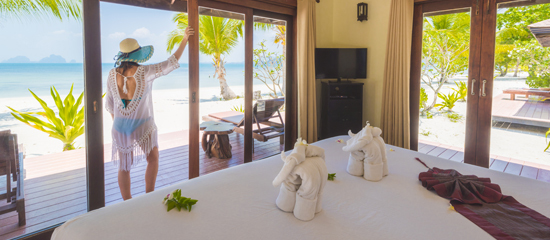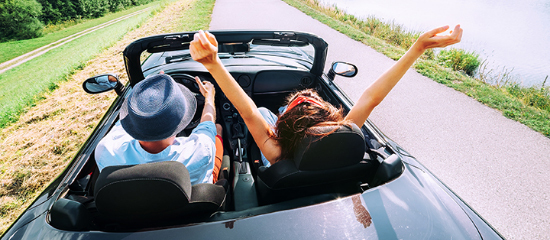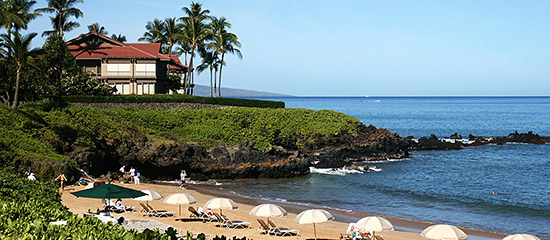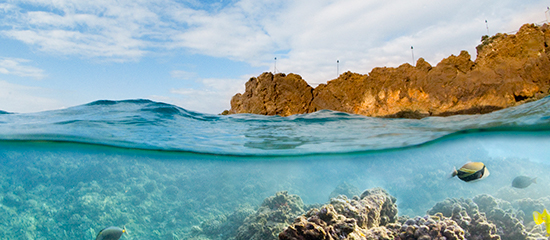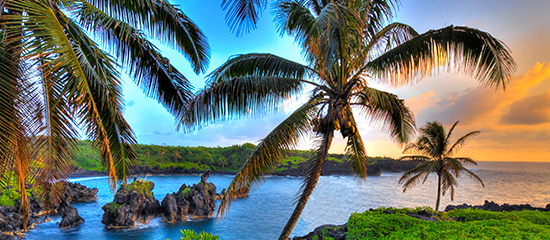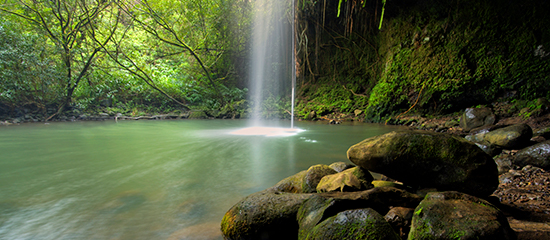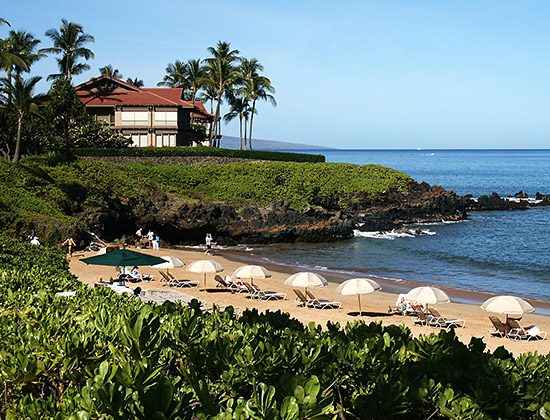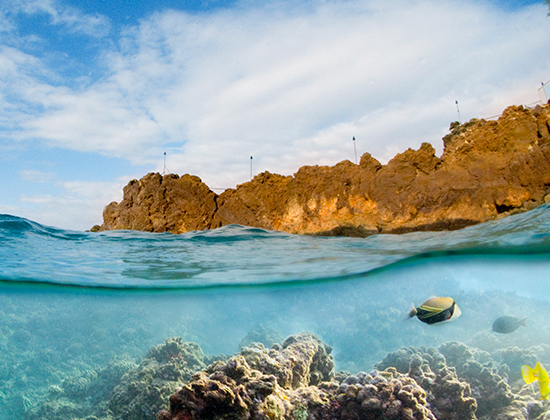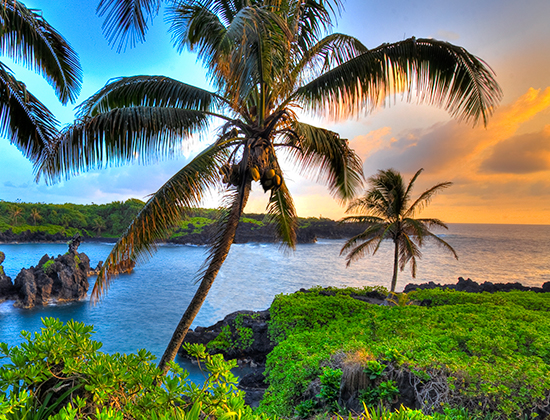Maui
No Hawaiian vacation is complete without a trip to Maui. “Winter” and “Summer” have no meaning when you have highs in the 80s and lows in the 70s all year. That’s why when it’s cold on the mainland, people flock to HI and a big percentage of them will go to Maui. Lahaina in Maui can see 30,000+ tourists during the season but there’s a lull in tourist traffic from mid-April to early-June and late-August to early-December.
Maui is also called the “Valley Isle” and it’s considered one of the best islands in the USA. Due to the terrain, Maui is full of microclimates. There are two volcanoes on either side of the island; the older one Pu’u Kukui reaches nearly 6,000’ while the younger one, Haleakala, is over 10,000’. Add this elevation to the trade winds and you have a diverse mix of temperatures, clouds, humidity, and rainfall. Be sure to check the forecasts before your trip and specifically look up weather information for any activities you may want to enjoy.
Why is Maui so popular? It has everything one could want in a tropical destination. There’s no way we can cover it all in a quick guide, but here are some highlights.
Water Activities in Maui
There are over 30 beaches on Maui. There’s more snorkeling, windsurfing, surfing, kiteboarding, kitesurfing, fishing, diving, and lounging on the sand that could fit into one lifetime much less one vacation.
However, there’s one water activity that you must fit into your trip—whale watching. Humpback Whales start their migration in Alaska in the autumn and swim down to Maui for the winter. They birth the next generation in the warm waters around Maui and head back north around April. Peak whale watching time is January to March.
Appreciate Nature in Maui
Maui is such a beautiful place that the National Park Service takes reservations to see the sunrise. The Haleakala National Park, home to the Haleakala Observatory, has four places where you can watch a sunrise unlike anything you’d ever see in the mainland.
- Pi’u Ula Ula or Red Hill Summit (10,023’)
- Haleakala Visitor Center (9,740’)
- Kalahaku Overlook (9,324’)
- Leleiwi Overlook (8,840’ with a short hike from the parking lot)
The park service will direct you toward one of the locations. People start entering the park around 3am to catch the sunrise, though you need to plan ahead for the weather and make a reservation.
Iao Valley has a loop hike (0.6 mi.) to a viewing area for the Iao Needle. This is a unique rock formation that’s the height of the Eiffel Tower. There’s a small, but beautiful botanical garden in the park. This park is the site of the Battle of Kepaniwai where Kamehameha I defeated the Maui army in 1790. The hours vary a lot so check with the National Park Service when you’re planning your trip.
If you need to rest your feet after visiting the parks, you can take a drive on the Hana Highway. This is a 64.6 mi. stretch of road that spans 600+ curves and 54 bridges. Give yourself plenty of time to explore this road. Not only is the view from the car absolutely stunning, but there are all sorts of fun activities to do along the route. You can get a tour on CD to listen to while driving and you’ll want to start early to get going before the crowds.
Here are some tips to exploring the Hana Highway:
- Check the road conditions & weather
- Bring hiking boots
- Bring rain gear and/or towels
- Bring bug spray
- Consider renting a convertible car
- Bring sunblock
- Start with a full tank of gas. (No gas stations in the 45 mi. between Paia and Hana)
- Plan to get lunch at a farmer’s market on the route
- Stay alert and switch drivers often
Explore Hawaiian History in Maui
Lahaina is one of the more popular destinations in Maui. The historic district has buildings from the 1800s and the town has the largest banyan tree in the USA. Divers appreciate Lahaina because the Carthaginian II was sunk off the coast for divers and submarine tourism. It’s the heart of whale watching in Maui. Every year on the summer solstice, visitors can experience the Lahaina Noon where the sun is directly overhead and straight-standing objects cast no shadows.
You can also learn more about the Hawaiian culture by visiting coffee farms for seed-to-cup tours and visit craft breweries and vodka distilleries to learn how local crops create their products and, of course, sample them too!
There are more things to do on a vacation in Maui than we could ever mention in an article. There’s too much to see and so much to experience! Fair warning: you may have to take a second vacation to Maui.
The whales won’t wait for you! Book your vacation today, and check out our Vacation Planning Resource Center for information to guide you on your next trip!

